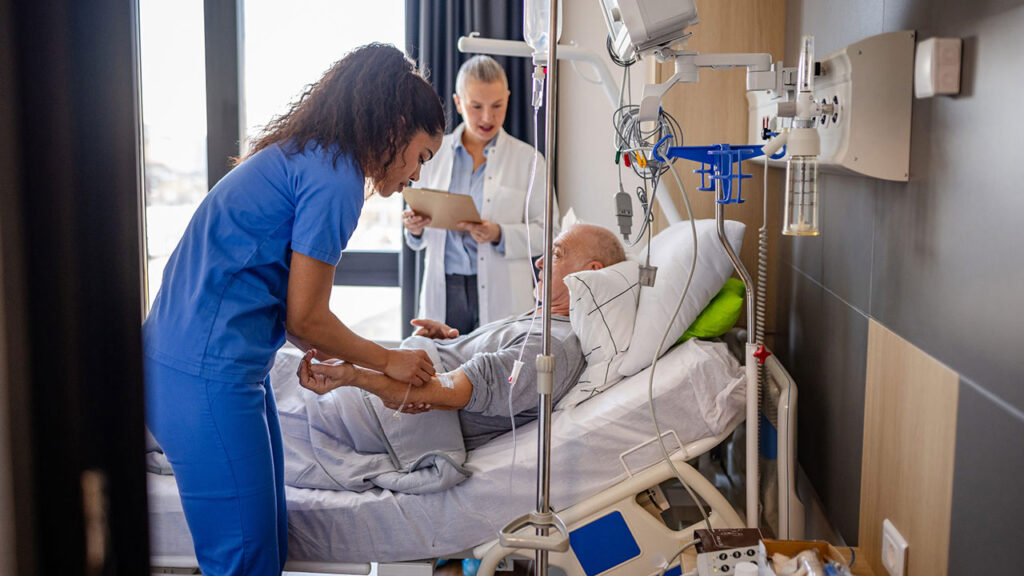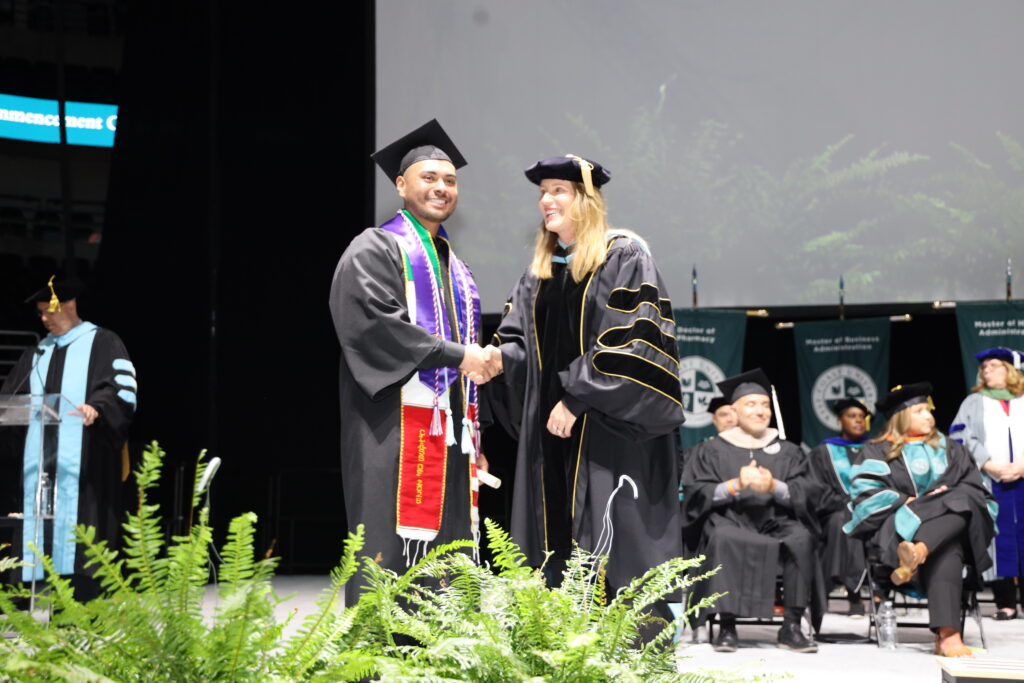While the amazing work of intensive care and respiratory nurses during the coronavirus pandemic has been well-documented, one West Coast University graduate’s story reminds us that the COVID-19 frontlines extend to all areas of the hospital.
“When I hear another healthcare provider tell me how relieved I must feel during this pandemic because I work in a low-risk environment in labor and delivery, my immediate answer is, ‘It can seem that way, but you should see the triage risk,” WCU alumnus Brittney Ayers said.
Ayers, who earned her bachelor’s of science in nursing and her master’s of nursing-family nurse practitioner from WCU, currently is pursuing her doctor of nursing practice while working as a labor and delivery nurse in Sylmar, California.
Just like in the emergency room, Ayers said there can be a lot of unknowns when the doors of the labor and delivery room bang open and a patient is rushed in. While maternity patients admitted to the hospital are tested for COVID-19 and the results are back within a few hours, other women can arrive in labor and start giving birth seconds after entering the unit — without any opportunity for coronavirus screenings.
“Triage for an active labor patient transitioning rapidly through the second stage of labor is often eventful even without a pandemic going on,” Ayers said. “During the pushing phase, the woman is often forcefully blowing air out from deep down in her lungs creating an aerosolizing event. Between the two situations, it turns the area I work into another frontline in this war on COVID-19.”
Additionally, family members will sometimes say anything to be present at the birth, Ayers said.
“This has happened for years but now, more than ever, it is terrifying that some support persons will not be honest and hide the truth of their symptoms so that they don’t miss the event,” she said.
Although Ayers has complete confidence in the hospital-issued N95 masks and personal protective equipment, she said there’s no way to practice social distancing in the close confines of the delivery room. Hospital staff often stand inches away from the patient’s face as they forcibly exhale over and over or scream in pain for epidural placement.
“Only an L&D nurse has stories of the aerosolizing of other types of fluid that are forgotten,” she said. “There is a definite splash zone in labor, and body fluids that no other department can describe!”
As a nurse and a mother herself, Ayers said she accepts that the safety of health care workers sometimes comes second when it’s life or death for the mother or her newborn. The decision to intubate during an emergency C-section, where the baby or mother could die in less than 10 minutes isn’t a hard one to make at all, she said — even if you don’t know the mother’s coronavirus status.
“Now take all that stress of caring for one patient’s safety and health and add the most dependent patient ever — one so small, who can only communicate with you by the sound of their heartbeat — but your job is to know how to treat one within the other,” she said.
WCU provides career guidance and assistance but cannot guarantee employment. The views and opinions expressed are those of the individuals and do not necessarily reflect the beliefs or position of the school or of any instructor or student.


